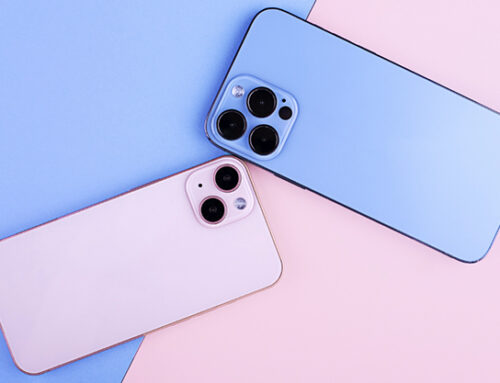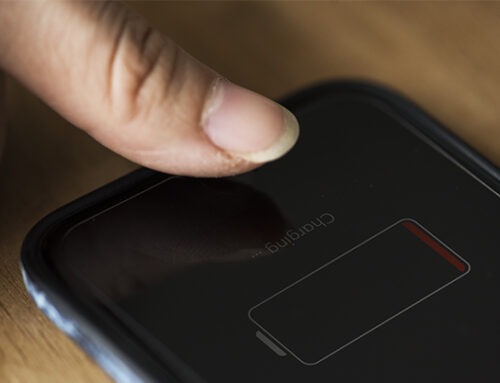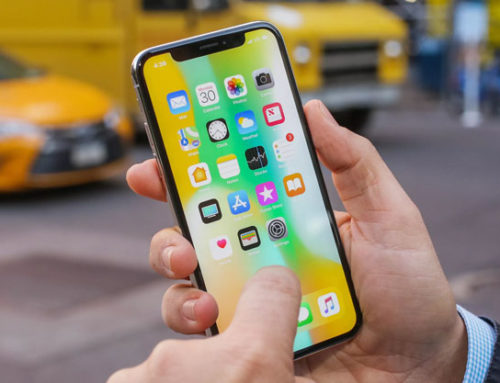The iPhone is designed to deliver an experience that is simple and easy to use. This is only possible through a combination of advanced technologies and sophisticated engineering. One important technology area is battery and performance.
Batteries are a complex technology, and a number of variables contribute to battery performance and related iPhone performance. All rechargeable batteries are consumables and have a limited lifespan—eventually their capacity and performance decline such that they need to be replaced. As batteries age, it can contribute to changes in iPhone performance
“Battery life” is the amount of time your device runs before it needs to be recharged. “Battery lifespan” is the amount of time your battery lasts until it needs to be replaced. Maximise both and you’ll get the most out of your Apple devices, no matter which ones you own.
Some Tips to protect the iPhone Battery:
1. Avoid Maximizing Your Charge Cycles
According to Apple, after 400 to 500 full charge cycles, iPhones hold significantly less charge compared to their original battery capacity. So, in general, the less you use your iPhone the longer the battery will last.
The battery cells that make up lithium-ion batteries have a limited lifespan, meaning you should take care of them if you want to keep reaping the benefits of your iPhone.
Keeping the device at full charge or completely drained can also reduce battery health. For this reason, you should try to keep your iPhone between 40% and 80% battery as much as possible.
One should take advantage of the iPhone’s Low Power mode when the battery is at 20% or lower to extend life until you can get to an outlet. The iPhones have special battery-conservation modes that turn off background apps, decrease processing power, dim the screen, and disable other services that can drain your battery quickly.
- To turn on your iPhone’s Low Power Mode, open the Control Center and tap the battery icon.
2. Don’t Leave Your iPhone Charged Overnight
Many people charge their phones overnight as a convenient option.. But overcharging damages your battery because it forces more current into already full cells than they are designed to hold. It also means your iPhone spends most of the night at 100% charge, which is bad for its health.
The iPhones offer an optimized battery charging feature, which you can enable by going to Settings > Battery > Battery Health. If you take your phone off charge at the same time every day, your iPhone will learn this pattern and avoid charging to 100% until right when you need it.
3. Turn Off Unused Features
In an effort to use fewer charge cycles and maintain the health of your iPhone’s battery, you should turn off any features that you don’t absolutely need. These can include power-hungry features like Background App Refresh, Bluetooth, Location Settings, and push notifications, all of which you can find in the Settings.
One of the common drains on battery life is leaving your phone’s WiFi or Bluetooth on while they’re not in use as they do drain your battery scanning for networks or devices to connect to.
In addition, you can also reduce your iPhone brightness and enable fewer notifications to avoid them waking up your Lock Screen all the time.
4. App Management
Closing apps i.e. force-quitting apps that are running in the background on your phone doesn’t actually improve your battery life at all. In fact, it can actually make things worse.
iOS systems have algorithms that automatically manage how much power or memory background apps are used. By forcing apps to close, you risk messing up this smart system. Furthermore, opening an app that is closed uses more power than returning to an app that’s already running in the background.
Instead you should be looking at how much refreshing your apps are doing in the background. Do you need Facebook or Instagram to keep updating itself even when you’re not looking at it? On iOS, go to Settings > General > Background App Refresh to review what apps you really need to be refreshed constantly.
5. Use Only Official Apple Chargers
For your safety and your iPhone’s battery health, only use Apple-certified accessories, especially Lightning cables. These help to protect against power surges and short circuits, which could cause injuries or damage to the phone’s internal components, including the battery.
6. Avoid Extreme Temperature Changes
The device is designed to perform well in a wide range of ambient temperatures, with 16° to 22° C (62° to 72° F) as the ideal comfort zone. It’s especially important to avoid exposing your device to ambient temperatures higher than 35° C (95° F), which can permanently damage battery capacity. That is, your battery won’t power your device as long on a given charge. Charging the device in high ambient temperatures can damage it further. Software may limit charging above 80 per cent when the recommended battery temperatures are exceeded. Even storing a battery in a hot environment can damage it irreversibly. When using your device in a very cold environment, you may notice a decrease in battery life, but this condition is temporary. Once the battery’s temperature returns to its normal operating range, its performance will return to normal as well.

7. Invest in an iPhone Case
To keep your battery working for longer, make sure to keep your iPhone out of dusty or dirty environments. This can lead to shorter battery life due to dust and dirt particles accumulating on the battery contacts.
Using a protective case can help protect your iPhone’s ports by trapping the debris before it enters your device. Additionally, a good iPhone case can protect your iPhone from other issues as well, such as broken screens and water damage.
At the same time, make sure your case doesn’t swaddle your iPhone, causing it to overheat and negatively impact the battery’s health.
8. Update to the Latest Version of iOS
A key way to maintain your iPhone’s battery health is to update the device’s operating system. As time goes on, iPhones receive updates that improve their speed and performance. This keeps the battery in good condition over the long term.
Additionally, these updates often come with new battery-saving features that users can enjoy. For instance, the iOS 12 update introduced Screen Time. This feature tracks how much time users spend on their devices and which apps they use the most. Users can then adjust their daily habits to make sure they are not spending too much unnecessary time on their phones.
9 Store it half-charged when you store it long term.
If you want to store your device long-term, two key factors will affect the overall health of your battery: the environmental temperature and the percentage of charge on the battery when it’s powered down for storage. Therefore, we recommend the following:
- Do not fully charge or fully discharge your device’s battery — charge it to around 50 per cent. If you store a device when its battery is fully discharged, the battery could fall into a deep discharge state, which renders it incapable of holding a charge. Conversely, if you store it fully charged for an extended period of time, the battery may lose some capacity, leading to shorter battery life.
- Power down the device to avoid additional battery use.
- Place your device in a cool, moisture-free environment that’s less than 32° C (90° F).
- If you plan to store your device for longer than six months, charge it to 50 per cent every six months.
Depending on how long you store your device, it may be in a low-battery state when you remove it from long-term storage. After it’s removed from storage, it may require 20 minutes of charging with the original adapter before you can use it.
Conclusion
Unfortunately, there is no way to stop iPhone batteries from becoming less effective with time. After all, iPhones still use lithium-ion batteries, which will naturally degrade with use. However, the long-term maintenance of an iPhone battery can still make a difference in its overall performance over time. Aside from keeping your iPhone on for longer, keeping the battery healthy can eliminate slowdowns, app crashes, and more. Thankfully, there are numerous things that you can do to make sure that your iPhone battery stays healthy for longer, and if all else fails, Apple can always replace it for you.





